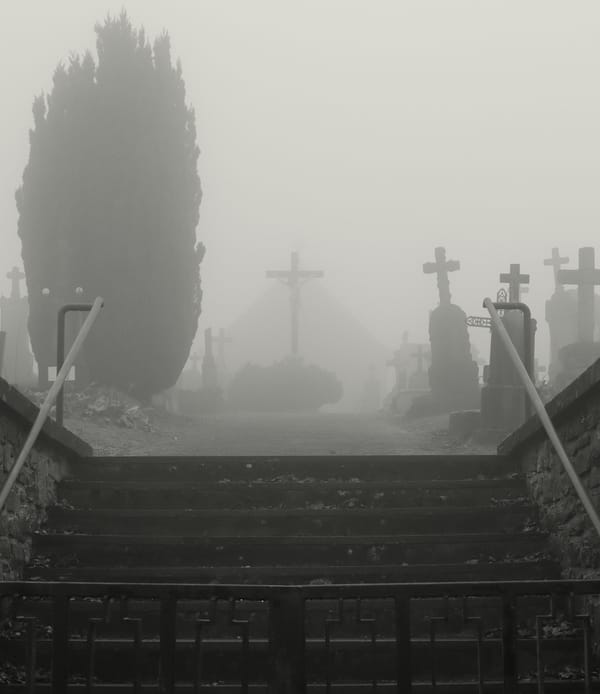WE TAKE DELIGHT in presenting to you a story by Isabel Hill Elder. Regular readers may recall other of her writings which we have featured here for your edification, education, and enjoyment; namely, The House of Levi.
Isabel Hill Elder was a 20th-century British author and researcher known for her works on early British and Celtic history, with a particular focus on religious and mythological elements. She wrote several books and essays that explored the British Israel message. She also went by the name Merch O Lundain Derri.
This work will encompass at least three parts. All emphases and comments within [brackets] are ours, unless otherwise noted. QUOTE:
The Story of Glastonbury—Celtic Twilight
The story of Glastonbury begins, for the great majority of people, with the traditional coming of Joseph of Arimathea in the earliest days A.D. [We shall have much more on Joseph of Arimathea in the near future.] We must, however, begin many centuries B.C. if we are to understand much that transpired in its history since Hu Gadarn Hyscion (Isaacson) or “Hu the Mighty,” son of Isaac, led a party of settlers to these islands about 1800 B.C.
This date has been confirmed by Dr. Gerald Hawkins in his researches in connection with Stonehenge as an Astronomical Circle; his calculations were done by computer at the Smithsonian Institute, Harvard University.
The date of “Hu the Mighty” was approximately the date of Abraham, or rather of his immediate descendants, and the first recorded instance of the Divinely appointed race name of his descendants after the birth of Isaac. “In Isaac shall thy seed be called.” (Gen. XXI, 12).
It is, therefore, not surprising to read that Sir Norman Lockyer, Edward Davies, William Stukeley and other authorities affirm that the religion of ancient Britain was the patriarchal.
At a later date when the Hebrew religion was established by the descendants of Abraham under Moses, with the tribe of Levi set apart for both civil and religious administration in the nation Israel. (Num. VIII 14), small detachments therefrom arrived frequently in these islands bringing with them the Levitical development which they named “The Truth.”
This appellation was never altered in Britain, and Druid (Truth) and Druthin (The servant of Truth) was retained along with its motto “The Truth Against the World,” until finally Druidism became merged in Christianity as a perfectly natural sequence, in the same manner in which Christianity is the natural and prophesied sequence to the Hebrew Faith.
When the Levitical religion was established among the early Britons as Druidism, the Hebrew mode of worship, the order of priesthood and the institutions were identical with those held by their kinsmen in the wilderness of Arabia and later in Canaan. It is through one of their institutions, the “City of Refuge”, that we shall best learn the story of Glastonbury.
The establishment, administration and object of the “City of Refuge” in Britain was precisely that of Biblical history; here, however, these places of refuge were known as “Sanctuaries” and by this name we may trace them throughout Britain.
The term “city” is rather a misnomer in modern nomenclature, for at their institution a “city” could mean a fortified castle surrounded by smaller buildings enclosed within a high wall complete with gates; such were the “Cities of Refuge” in Biblical times and in Britain under the term “sanctuary.”
The sanctuary was reserved for the person fleeing from injustice or oppression, and as a resting place for distinguished travellers.
The building was under Government inspection for the purpose of maintenance and repair; there was an annual inspection of roads and bridges leading to the Sanctuary, and along the roads were signpost directions to the place of refuge.
In Britain the Sanctuary was erected close to the Stone Circle and covered Temple, where, in the case of the more important circles, was also the College, all under the direction of the Druidic hierarchy. A notable place of refuge was at Westminster where, to this day, the space fronting the west doors of Westminster Abbey is known as “Broad Sanctuary.”
Privilege of sanctuary was granted in Britain down to the reign of James I, and to-day those churches that are furnished with great circular metal door handles, are irrefutably places of refuge. The Psalmist uses the terminology of the “City of Refuge” to encourage the people of Israel to have confidence in the protection and love of God.
“I will say of the Lord he is my refuge, my fortress, my God, in Him, will I trust” (Psalm XCI, 2). The Psalmist’s son Solomon, maintained this illustration when he declared “The name of the Lord is a strong tower, the righteous runneth into it and is safe” (Proverbs XVIII, 10).
Glastonbury was from the earliest times an important Druidic centre, perhaps the most important in the South-West of England. That there was an observatory on the summit of the Tor is self-evident from the fact that there was a well at its base, for the wells were the telescopes of the ancient astronomers.
The Tor well is unique, not only for its great antiquity, but in its structure which displays Egyptian influence; this is accounted for by the fact that the Hebrews during their years of bondage were obliged to build in the Egyptian style and this influenced their building work for many centuries.
This well never runs dry, yielding 1000 gallons of chalybeate (or iron impregnated) water per hour and at a uniform temperature throughout the year. If the name “chalice” was given to this well earlier than the tenth century it would point to a corruption of the word “chalybeate,” for the road leading from the base of the Tor to the town is known as Chilkwell (formerly Chalkwell) both obvious corruptions of chalybeate.
Cures were effected by the water from this well, no doubt in cases where the malady required the administration of iron. Cures were frequently well-nigh miraculous.
In support of the belief that the well at Glastonbury was a telescope well it is interesting to learn that “within the grounds of Greenwich Observatory is a well of unknown antiquity, an interesting link with pre-historic times.
This well was used by Flamstead, the first Astronomer Royal for making daylight observations; an old print preserved in the Observatory is now the only record of its existence, Sir George Airey having had it covered up” (E. O. Gordon “Pre-historic London”, p. 69).
The well at the base of the Tor is not the only witness to the fact that an Observatory once stood on its summit for the Zodiac Circle which encompasses the Tor (the signs of the sun’s path through the heavens) is an unmistakable proof of its importance to the ancient British astronomer.
The signs of the Zodiac are not necessarily connected with pagan worship, for we learn from Josephus that the signs of the Zodiac were engraved, together with the names of the twelve tribes, on the breast plate of the Hebrew high priest, and in his description of the Temple at Jerusalem Josephus says: — “The loaves on the table, twelve in number, symbolised the Circle of the Zodiac” (“Jewish Wars” Bk. v. p. 132).
In several of our own Cathedrals we have the signs of the Zodiac represented as sacred emblems on the tiles of the Sanctuary floor, for instance at Canterbury and Rochester.
The etymology of the name Glastonbury is not difficult. “Glas” is the Celtic word for green, and “ton” a hill ... Glaston is therefore the green hill. When the Saxons overran Somerset in the sixth century, they built a town about a half mile from the Glaston, and obtaining a charter added “borough” or “bury” to the original name which has since remained Glastonbury.
Tor is the Celtic word for “tower,” more particularly a tower on a hill, but whether in allusion to a pre-historic building, or of early Christian times does not appear. The Tor is said to be very like Mount Tabor, the Mount of Transfiguration.
When the Levitical religion of the Hebrews was established in Britain as Druidism there was one detail which could not be reproduced in these islands—the pomegranate, the sacred fruit of the Levites. The pomegranate was to the Israelite the emblem of prosperity and plentifulness. (Num. XIII, 23. Deut. VIII, 8).
This fruit as an emblem was embroidered on the hem of the priest’s robes and on the Tabernacle and Temple hangings; and also carved in wood and stone, brass work also displayed this emblem. (I Kings VII 42). The Druids of Britain overcame this difficulty by substituting the apple for the Oriental fruit of the same species and eminently suitable for cultivation in our climate.
An island about one mile from the Tor at Glastonbury was found to be ideal, with its moist ground and atmosphere, for the cultivation of the apple and its mistletoe; eventually the apple was produced in all parts of the British Isles. At Glastonbury the island became known as Avalon, or Isle of Apples. And because set apart for this purpose was regarded by the people as sacred.
Avalon retained its appellation “sacred” into the Christian era when it became the burial place of kings and queens. Since the reclamation of the land from the waters of the Bristol Channel this island has become merged in the Vale of Avalon and is un-identifiable.
The Sanctuary at Glastonbury retained its importance as a place of refuge into medieval times despite the changes in religious practices, as the names of historic personages who fled there testify; the second Patrick, called Abbot of Ireland, being, perhaps the most notable (vide William of Malmesbury).
This Patrick, by his exactions and cruelty caused an exasperated people to drive him from the country; to Glastonbury he fled and settled in the Roman Catholic community there whose tenets and beliefs he had accepted after his visit to Rome. (Meredith Hanmer “History of Ireland”, p. 171).
It is impossible to view Glastonbury in Druidic times as other than a place of wealth and prosperity besides its reputation as an educational centre and place of refuge, while its sister community, Caerleon-on-Usk on the other side of the Severn is described as a “city of palaces and gilded roofs,” the reputed home of Arviragus, the British king (“Prehistoric London”, p. 77).
Arviragus was famed beyond his native shores. Spenser pays his tribute to the British king in the lines — “Was never king more highly magnified nor dread of Romans was than Arviragus.” As a soldier Juvenal pays tribute in a satire making one of his characters ask a pale nervous-looking man, “What is the matter with you? Have you seen the car-borne British king, Arviragus?”
As a writer, Pitsaeus, the Continental Roman Canon (1619) in his Hist. de Rebus Anglicis includes Arviragus as “illustrious writer of Britain.”
This then was the Glastonbury known to Joseph of Arimathea on his visits to Britain as a metal millionaire—tin from Cornwall and lead from the Mendips; nor did he come unheralded for Joseph was a close friend of Arviragus and his family.
There is a strong unvarying tradition that Joseph brought the Boy Jesus with him on some of his visits, Joseph being the uncle of the virgin Mary (her father’s youngest brother) and that part of His school days were spent at the Druidic College at Glastonbury, where, under the Druids, the best education in the world could be obtained. Perhaps with more certainty the belief is held in Glastonbury that our Lord in later years, came there to reside.
This persistent tradition, with its folk-memory foundation, was the inspiration behind William Blake’s sacred poem: —
“And did those feet in ancient time?
Walk upon England’s mountains green,
And was the Holy Lamb of God?
On England’s pleasant pastures seen.”
The term “Secretum Dei” at Glastonbury arose no doubt, in connection with the Sanctuary or City of Refuge where our Lord would reside.
(To be continued)
~END~




